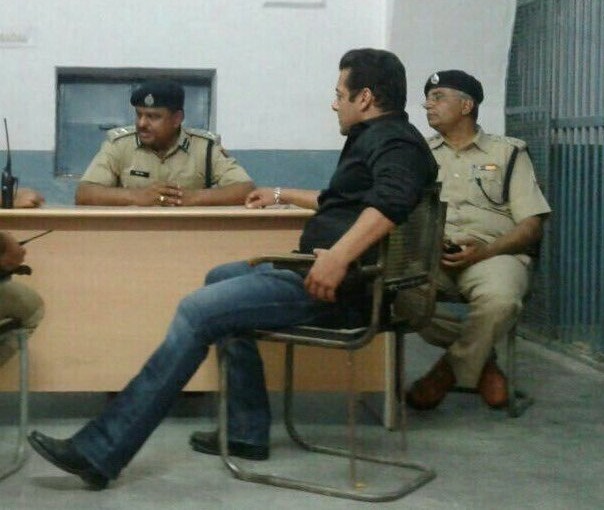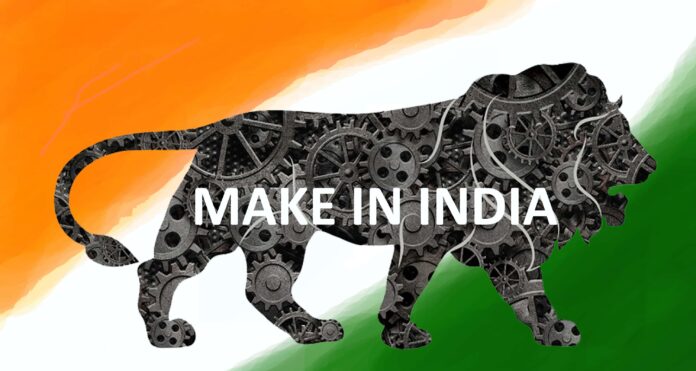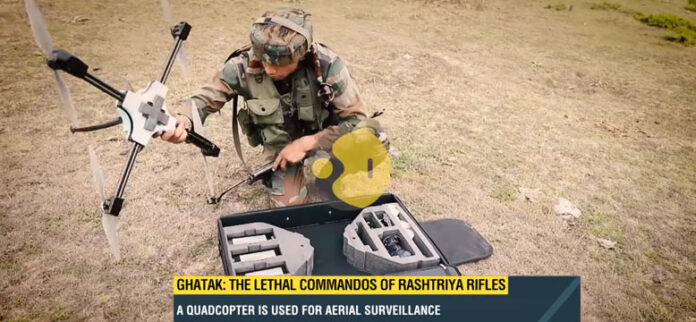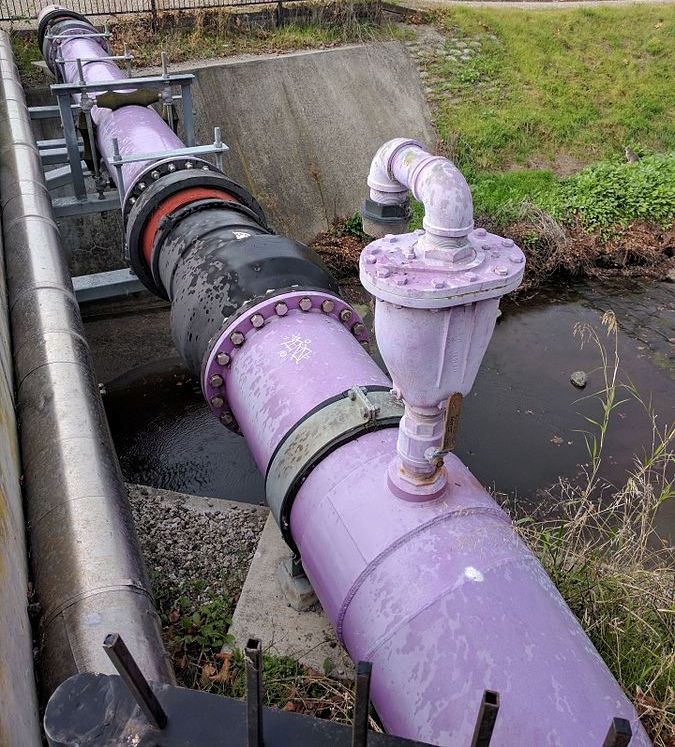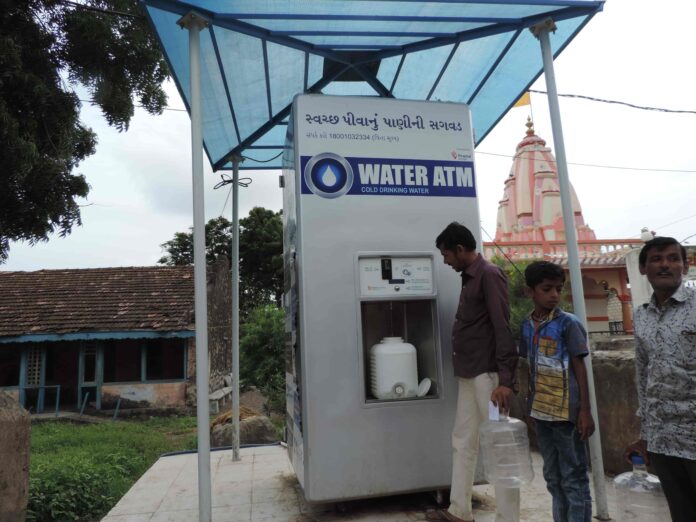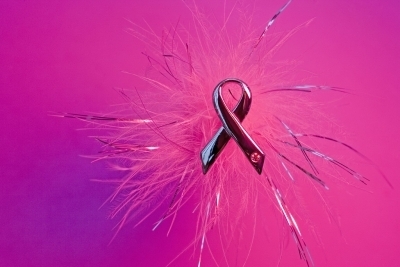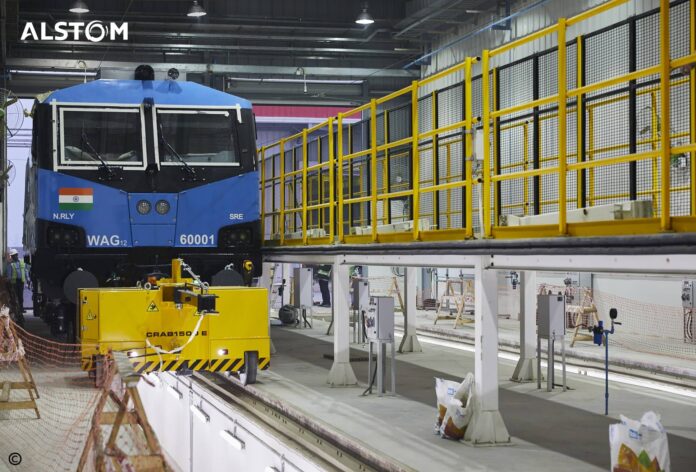सलमान सिर्फ हीरो नहीं बल्कि एक सोशली रिस्पांसिबल सिटीजन भी है।
CSR: Gardening For Mental And Physical Health
Gardening is the new cool hobby that everyone should adapt. Plant cultivation is a necessity for existence of life. However, with rapid urbanization, the green cover of every city is reducing in size.
India is second largest populated country in the world. And the population keeps growing unchecked. With growing population, the demand for resources also grows. However, their availability is limited. The food system in India is suffering because of the increasing population.
Industrialization is farming has made it expensive for small scale farmers. In order to meet the demands, the farmers are forced to adapt these new equipments that are not really tried and tested. This forces them to go under debts. It also ruins the quality of the soil in a longer run. Farmers even end up using chemical fertilizers and pesticides in high amounts to increase the production of their produce and earn more money to get rid of their debts. In the end, it is not just them, but everyone that suffers. Because the food produced in this manner is not really healthy.
Home gardening is a concept that could solve many problems. It can ensure us of the quality of food we eat, because we exactly know where it came from. Also, since we are used to the soil of the place we live, it is healthier to eat the food grown in that soil rather than that of somewhere else.
Gardening is also considered as a healthy exercise everyone should practice. Daily gardening chores like watering, weeding, trellising, mulching, and harvesting are great ways to augment an exercise regimen. Although, most of the time gardening is not a substitute for focused cardio and strength training, but it combines low-impact exercise with other benefits. Studies have also shown that staying in a natural environment, reduce stress, lower blood pressure and improve concentration.
Gardening is often considered to be therapeutic by many. The activity of gardening is compared with meditation or praying because of its peaceful nature. Gardening is also a doable contribution everyone can make to protect the environment. However, if that is not a good enough motivator to garden, we recommend you to try it out once, for your personal peace of mind and health.
Thank you for reading the story until the very end. We appreciate the time you have given us. In addition, your thoughts and inputs will genuinely make a difference to us. Please do drop in a line and help us do better.
Regards,
The CSR Journal Team
Enabling Make In India For CSR
Contribution from the manufacturing sector to India’s Gross Domestic Product (GDP) has remained stagnated at around 16% for the past 25 years. Prime Minister Narendra Modi launched Make in India on 25 September 2014, to curb the situation and turn India into a manufacturing hub of the world. He also introduced ZED (Zero Defect, Zero Effect) on the 68th independence day of India, in order to encourage manufacturing of environment friendly products of utmost quality.
The Gross Value Added (GVA) at basic current prices from the manufacturing sector in India grew at a CAGR of 4.34 per cent during FY12 and FY18 according to the second advance estimates of annual national income published by the Government of India. Quarterly GVA at basic prices from manufacturing sector grew by 10.92 per cent in the third quarter of FY18.
The Government of India aims to increase the share of manufacturing sector to the gross domestic product (GDP) to 25 per cent by 2022 under the Make in India initiative. This will also create 100 million new jobs by 2022.
In support of these initiatives of the Government of India; MyEasyISO has announced its newest corporate social responsibility (CSR) initiative. The organization will be offering world-class software to manage Quality – Health & Safety – Environment management systems complimentary & free of cost to deserving companies & private organizations in India. This would help them implement ZED framework better and become more competitive. Along with ZED initiative, any global organisation, establishing its operations in India as a part of Make in India scheme will also be eligible for this program.
In order to take advantage of this opportunity, MEMEs need to make an application to MyEasyISO at info@myeasyiso.com with a brief description of their business and why should they receive the complimentary subscription and license of this business management software, which is used by thousands of organisations across more than 100 countries.
Globally organisations have saved more than 65% of the resources using MyEasyISO to manage their business processes when compared with operating them manually. Higher efficiency, collaboration, access control, employee friendly interface and matured GRC framework supported by a team of business management specialists and experts have enabled companies to be more proactive, improve quality, reduce defects and enhance their market share.
Effivity Technologies Pvt. Ltd will be investing 120,000 US $ as a part of this CSR initiative. The offering will be available to 100 organisations which may be either ZED assessed/certified or any micro small & medium organisation in India who want to improve their performance, productivity & profitability.
Thank you for reading the story until the very end. We appreciate the time you have given us. In addition, your thoughts and inputs will genuinely make a difference to us. Please do drop in a line and help us do better.
Regards,
The CSR Journal Team
CSR: Downsizing The Brain Drain India Faces
At some point we have all wondered, what if IIT graduates would rather stay back instead of going outside for easy opportunities? What if they would rather help solve massive problems than do it for someone else? What if they rather help develop our country than help others push further ahead?
The challenge is so acute that even the government had to launch, the Prime Minister Research Fellowship this month in order to stop the brain drain. IdeaForge is an entity, which helps citizen to stay back and help the country become self-reliant in being able to create cutting edge unmanned systems. The main idea is to create an environment, where people would rather stay in the country then go outside in search for an easier path to success.
Major Manish, does a routine surveillance patrol with his platoon. He is armed by an eye in the sky, “The Naitra Drone”. Naitra helps the platoon to scan the area ahead and look for a possible ambush or to scan for militants. This has aided the forces in being able to detect the Naxals digging roads to bury landmines, saving dozens of life from a future attack.
IdeaForge’s drones are capable of flying for more than 60 minutes, the highest capability in less than 3 kgs. The help them dominate an area of more than 5kms in radius. A jawaan carries the platform in his backpack and can deploy it in any terrain he might encounter. With little training he’s able to operate the system with full confidence because he knows that the platform takes care of itself in the air. The key task is to focus on what he can and wants to see. Such missions happens everyday today.
“It all started in the year 2000, when I joined IIT Bombay, with the dream of being able to implement my own ideas. But in the initial years, I hardly found people interested or excited about hands on work. It was not until I met my team-mates and found an oasis. One of us even came up with the idea of creating and flying a hovercraft over the Powai lake right next to our campus. From the first prototype that we built in 2004, to the one you might have seen in the movie “3 Idiots”, says Ankit Mehta, Co-Founder and CEO – ideaForge & Winner – MIF Awards 2018.
In 2009, the world’s smallest and lightest autopilot was built and delivered it to the DRDO Labs for their UAV programs. The country’s first fully autonomous micro UAV was launched too.
Since then 100 of these platforms have been delivered to the armed forces, competing against global vendors yet bagging majority of this opportunity in this space in our country. The Indian government plans to buy nearly 3 billion dollars worth of UAVs over a period of next 10yrs in various categories.
In the Uttrakhand disaster; the equipments have been flown over dozens of sites, where rescuers had not been able to reach. When a tigress became a man-eater in UP, the government spent crores of rupees in search of the tigress, but eventually when the drones was put in service, the tigress was located in one night.
“Today, our platforms are also used for industrial and agricultural applications. I am glad that platforms such as Marico Innovation Foundation Awards are recognising are helping us spread awareness with regards to our innovation. But, when I look back, I believe that being a part of the IIT ecosystem, was our great privilege. And building our IdeaForge, is our means, and our way of giving back,” reminiscences Ankit Mehta.
Thank you for reading the story until the very end. We appreciate the time you have given us. In addition, your thoughts and inputs will genuinely make a difference to us. Please do drop in a line and help us do better.
Regards,
The CSR Journal Team
Improving The Eco Balance Of Water Treatment Systems
A public water system is referred to certain utilities and organisations which provide drinking water. Designing water systems are usually a tedious process. It is crucial to simulate complex plant designs including a combination of several treatment steps in a single design process. This helps to save trickling water which is lost extensively in the middle stages.
Lanxess has enhanced its LewaPlus software for designing water treatment systems. With this 2.0 release, users can combine per drag and drop different technologies in one design. “Because modules can be added to a project via drag and drop, LewaPlus 2.0 is now even more intuitive to use than existing programs on the market,” says Dr. Jens Lipnizki, Technical Head at Lanxess.
The water analysis calculated by the individual modules is automatically taken over as feed to the subsequent module. During the design process, the user can change the design of the system via drag and drop.
With the upgrade, calculations can be made for designs that not only treat the purified stream of water, but also the so-called retentate (where water does not pass through the membrane). As a result, environmentally-friendly overall concepts can be calculated in order to significantly reduce the volume of wastewater produced in practice.
The intuitive design is a comprehensive tool for planning and designing an industrial water treatment system. As a result, users can precisely plan important factors such as operating costs, power consumption, and water quality. One module can even be used to model a CCRO system (closed circuit reverse osmosis). This helps to enhance the ecobalance of water treatment through the use of either ZLD (zero liquid discharge) or MLD (minimal liquid discharge) treatment processes.
Thank you for reading the story until the very end. We appreciate the time you have given us. In addition, your thoughts and inputs will genuinely make a difference to us. Please do drop in a line and help us do better.
Regards,
The CSR Journal Team
CSR: Water ATMs For Drinking Water In villages
Availability of clean and safe water is fundamental to human existence. India houses maximum number of people in the world who do not have regular access to clean drinking water. Lack of clean water for consumption can give rise to various water borne diseases.
According to a report by the United Nations, more than three million people in the world die every year due to water borne diseases, including 1.2 million children. In India, over one lakh people die every year of water borne diseases. Cholera, Typhoid, Gastroenteritis and Diarrhea are just some of the examples of these water borne diseases that erupt every year during monsoon and summer in India, thanks to the poor quality of drinking water and sanitation.
As a part of its Corporate Social Responsibility (CSR) initiative, APM Terminals Pipavav has installed Water ATMs in 12 villages around the port to provide access to safe and clean drinking water.
Water ATM is an automated water vending machine that dispenses clean RO filtered chilled drinking water. These are installed to increase and cultivate the habit of consuming clean water and reduce the maladies caused by water sanitation like jaundice, diarrhea, typhoid etc.
During the first year of the project significant decrease in diarrhea, stomach pain and joint pain etc is reported in the project areas.
“United Nations has recognized the access to clean water as a basic human right,” said Keld Pedersen, Managing Director, APM Terminals Pipavav. “We understand the importance of hygienic water for the overall health of villagers and are happy to be a part of this initiative.”
The Water ATMs are installed for the villagers in Juni Mandardi, Ningala, Jolapur, Hadmatiya, Untiya, Juni Barpatoli ,Navi Barpatoli, Khumbhariya, Mota Agariya, Rajparda, Chatadiya and Navi Mandardi so far.
Thank you for reading the story until the very end. We appreciate the time you have given us. In addition, your thoughts and inputs will genuinely make a difference to us. Please do drop in a line and help us do better.
Regards,
The CSR Journal Team
The Power Of Films To Bring Social Change
Entertainment, perception, emotions and outlook are some of the terms that can be associated with media. The amplifying power of media and its influence on society is undeniable; especially, Visual media combined with the easy access to Social Media has unleashed the power of imagery. Leveraging Visual media, particularly videos, to highlight a social issue can reap far-reaching benefits in a short span of time given its wide acceptance amongst today’s youth. It is not uncommon to find heartwarming stories of resilience, courage and determination from the nooks and corners of India.
Leena Kejriwal’s fight against Human Trafficking
Leena Kejriwal, a Kolkata based photographer, would often volunteer at Hamari Muskaan, a Non-Profit organisation which works with the children of sex workers to prevent the next generation from entering the industry. It was then that Leena met Jaya, a former sex worker who was sold to a brothel at Sonagachi in Kolkata under the pretence of giving her work.
Her short film led to Leena’s extensive and widely-recognised public art campaign against human trafficking, MISSING. The artwork consists of larger-than-life silhouettes of young girls placed against the urban skyline representing the millions who ‘disappear’ from their homes into the shadowy world of trafficking. The campaign also inspired a game app, MISSING, which features Champa, a character fighting against traps of prostitution and trafficking. The film won the NASSCOM Indie Game of the Year Award and has over half a million organic downloads in 70+ countries. Leena was able to crowd fund INR 16 lakh for Hamari Muskaan with more financial aid came pouring in from around the world.
Ravi Iyer’s support to ‘Probably Paradise’
Ravi Iyer, a filmmaker, made a film on ‘Probably Paradise’ – a shelter for terminally ill animals run by the inspirational Roxanne, now in her mid-60s, who looks after abandoned and geriatric animals, making their last days dignified. The shelter rests on a 1.5 acre plot in Karjat. While volunteers and supporters of the shelter visit often, maintaining the shelter is not an easy task with increasing number of animals every day.
The time spent with Roxanne has turned Ravi and his team into active supporters of the shelter. They used their film to raise funds and have set up a solar electricity system there. Ravi’s hear film enabled Roxanne to reach out to more volunteers and donors for Probably Paradise.
Ravi, continues to make short films for Roxanne as well as other Non-Profits. “It’s definitely had an impact on us. Not only has this experience made us realise the power of films to bring out such stories, but also there lies a huge potential to sensitise people, garner their support and further these causes. Ever since we’ve made the film, there are a lot more Non-Profits who have approached us. People have become more aware of animal rights, animal care.” adds Ravi.
Meghathithi Kabeer’s campaign to clean river Yamuna
New Delhi-based filmmaker and environmentalist, Meghatithi Kabeer made a film on the extraordinary work of Sanjay Kumar and his team of Gotakhors (divers). The divers selflessly work to clean the river Yamuna, recently declared dead by the United Nations. Meghatithi’s film has not only created awareness but has also given the Yamuna gotakhors nationwide recognition and support from the government and corporates.
Apart from screening the award-winning film in several international film festivals, Meghathithi has recently launched the ‘I am Yamuna’ campaign to amplify on-ground efforts for the river. He has also set up a tea stall around the river to create employment for divers (gotakhors). Today, Meghatithi continues to mobilise people for the Gotakhor’s cause and work towards conserving environment.
 Prerana Langa is the CEO of Yes Foundation, social development arm of Yes Bank. She developed YES! i am the CHANGE, a mindset transformation project, innovatively using the medium of films to ignite the spirit of driving positive social change amongst the youth enabling them to become agents of social change.
Prerana Langa is the CEO of Yes Foundation, social development arm of Yes Bank. She developed YES! i am the CHANGE, a mindset transformation project, innovatively using the medium of films to ignite the spirit of driving positive social change amongst the youth enabling them to become agents of social change.
Views of the author are personal and do not necessarily represent the website’s views.
Thank you for reading the story until the very end. We appreciate the time you have given us. In addition, your thoughts and inputs will genuinely make a difference to us. Please do drop in a line and help us do better.
Regards,
The CSR Journal Team
CSR: Combating Cancer With A Gifted Smile
CSR Rules came into effect on 1 April 2014. It state that companies with a net worth of Rs500 crore or revenue of Rs1,000 crore or net profit of Rs5 crore should spend 2% of their average profit in the last three years on social development-related activities such as sports, education, healthcare and poverty alleviation, among others, which are listed in Schedule VII of the Rules.
Recently, the UN initiative of International day of Sport for development was celebrated. Cricketer Yuvraj Singh, via his NGO- YOUWECAN is working in three primary areas of health, education and sports. Gift a Smile, a recent initiative is aiming to bring smiles to the lives of people suffering from cancer and their caregivers.
“I feel blessed to raise cancer awareness. I stand as an example myself of how sports can change a person’s life and enable them to fight against all odds. With raising cancer awareness, I hope to be able to aid the development of a more cancer aware society.” said Yuvraj Singh.
Gift a smile claims to add joy to the people suffering from cancer, their caregivers as well as cancer survivors. To inculcate the values of empathy, team work and leadership amongst the youth. This can be done through awareness, knowledge sharing and resource mobilisation.
In India, cancer has become one of the four leading causes of death. According to estimates from the Cancer Registry Program of ICMR, Delhi has the highest prevalence rate in India – there are currently 200,000 people in the capital with cancer with about 21,000 being added annually. Of these, 10,000 die every year.
We individuals need to put in efforts of adolescent and youth, who have the passion to make a significant contribution to the society through their skills and competencies. To inculcate the values of helping others from an early age in children, adolescent and youth as they are the future of our country and have an important role to play in making a different and emerge as change makers.
Thank you for reading the story until the very end. We appreciate the time you have given us. In addition, your thoughts and inputs will genuinely make a difference to us. Please do drop in a line and help us do better.
Regards,
The CSR Journal Team
CSR: India Flags Off Its First E-loco Manufacturing Facility
Prime Minister Narendra Modi dedicated the ‘Make in India’ Madhepura Electric Locomotive Facility to the nation and remotely flagged off the country’s first all-electric locomotive from Madhepura in Bihar.
Railway is responsible for generating 22 million tonnes of Carbon dioxide every year. The railways had been working towards electrifying its major routes in order to make an efficient use of energy while reducing the carbon footprint. The new electric locomotive will help reducing the emissions by 30 to 40 per cent every year.
Manufactured in India, under a landmark Joint Venture between Alstom (76%) and Indian Railways (24%), this electric locomotive project marks a transformational step change for rail freight movement in India as well as the region of Madhepura.
The ‘WAG12’ double section locomotives are capable of hauling 6,000 tonnes, at a maximum speed of 120 km/h. This is because of its 12,000 Horsepower which will allow faster and safer movement of heavier freight trains across the country. It will also contribute towards reduction of noise pollution.
The electric locomotives will eventually move to the testing and maintenance depot at Saharanpur in Uttar Pradesh before being introduced to the mainline network as part of the freight fleet.
Mr. Alain Spohr, Managing Director, India & South Asia, Alstom said, “We are confident that this facility will pave the way for the industrial development in Bihar and will act as a gateway of opportunities for the region.”
In Madhepura, the company is working towards developing an ecosystem to enable local manufacturers to set up manufacturing units in and around the area. The active and targeted community action programme focusing on skill development and education will further prepare more than 5000 young minds for gainful employment. The company will adopt a local ITI to provide skill development to 840 students over the next 10 years. Of these, 300 students will be absorbed for apprenticeship programmes within the facility. This will work in tandem with focused scholarship programmes for meritorious students in schools in the area to develop children from an early age as well.
Other initiatives for supporting the local communities include healthcare interventions by the company like mobile medical units in the area with doctors on board, health and wellness awareness camps, free medication distribution and special services for women and children.
The electric locomotive is a win-win to the Indian economy. It is not only energy efficient and sustainable, but with the “Make in India” aspect involved, it is also socially beneficial in terms of generating employment and upgrading the skills along with infrastructure.
Thank you for reading the story until the very end. We appreciate the time you have given us. In addition, your thoughts and inputs will genuinely make a difference to us. Please do drop in a line and help us do better.
Regards,
The CSR Journal Team

